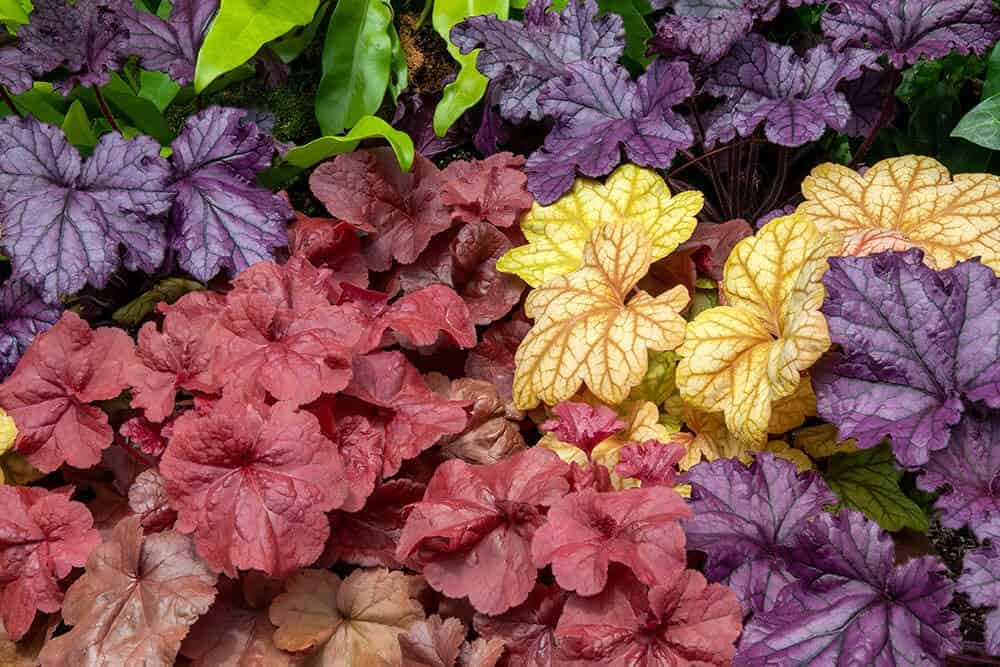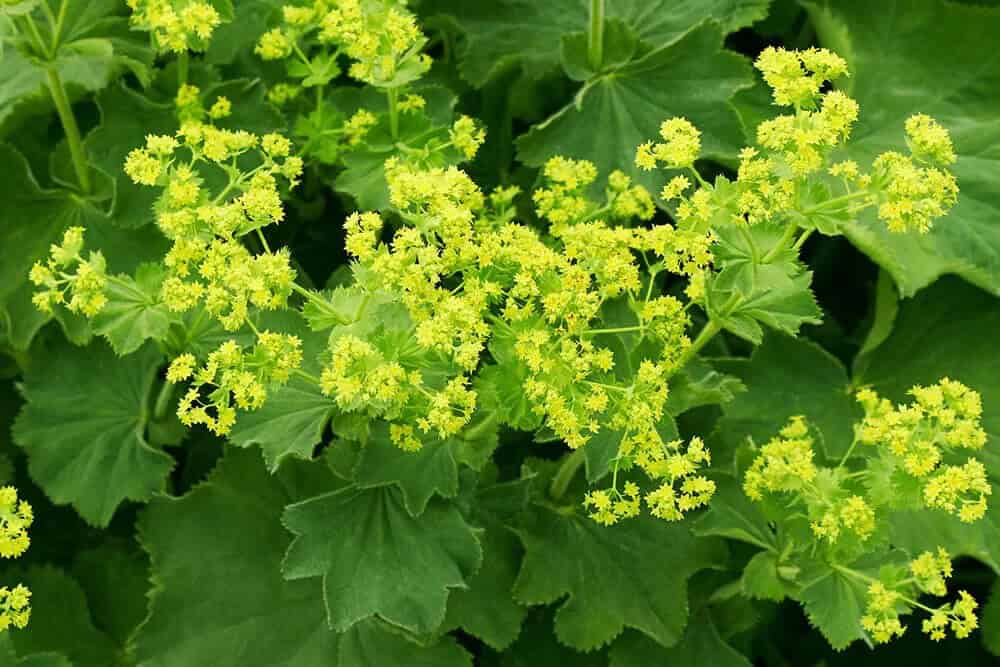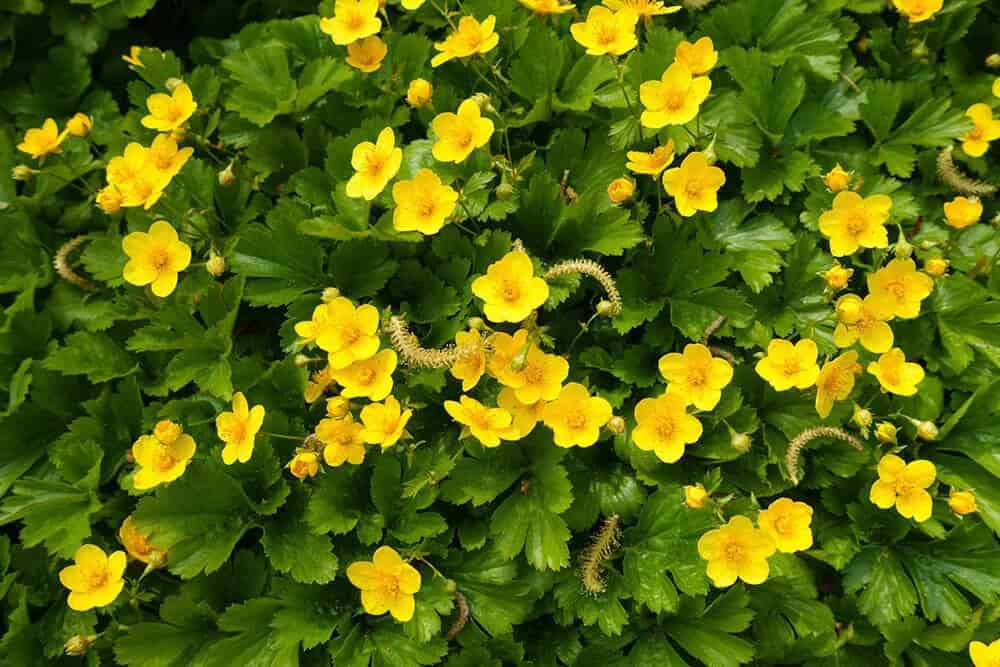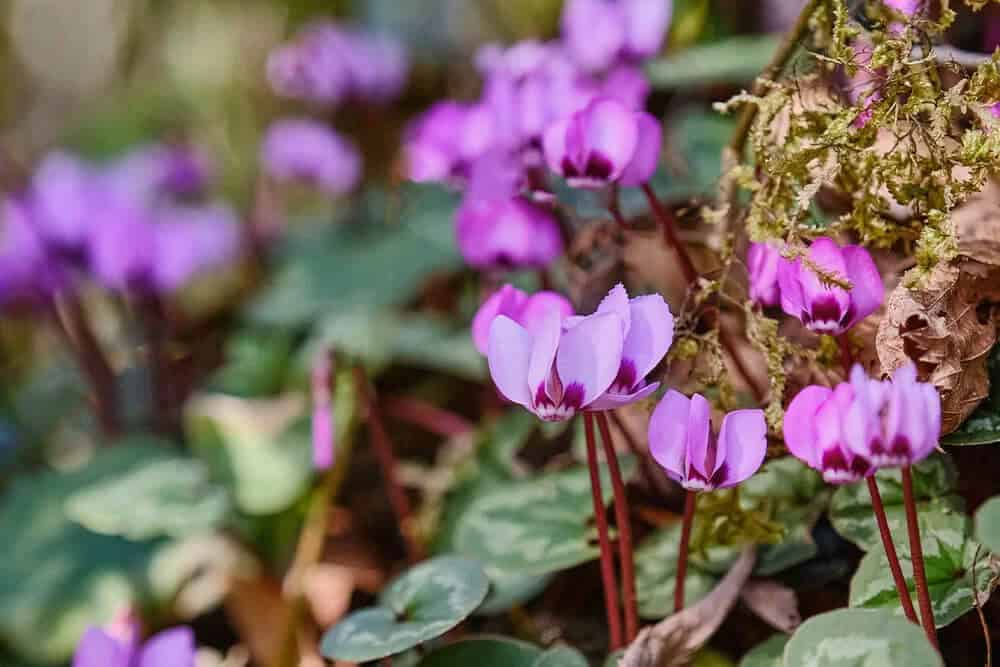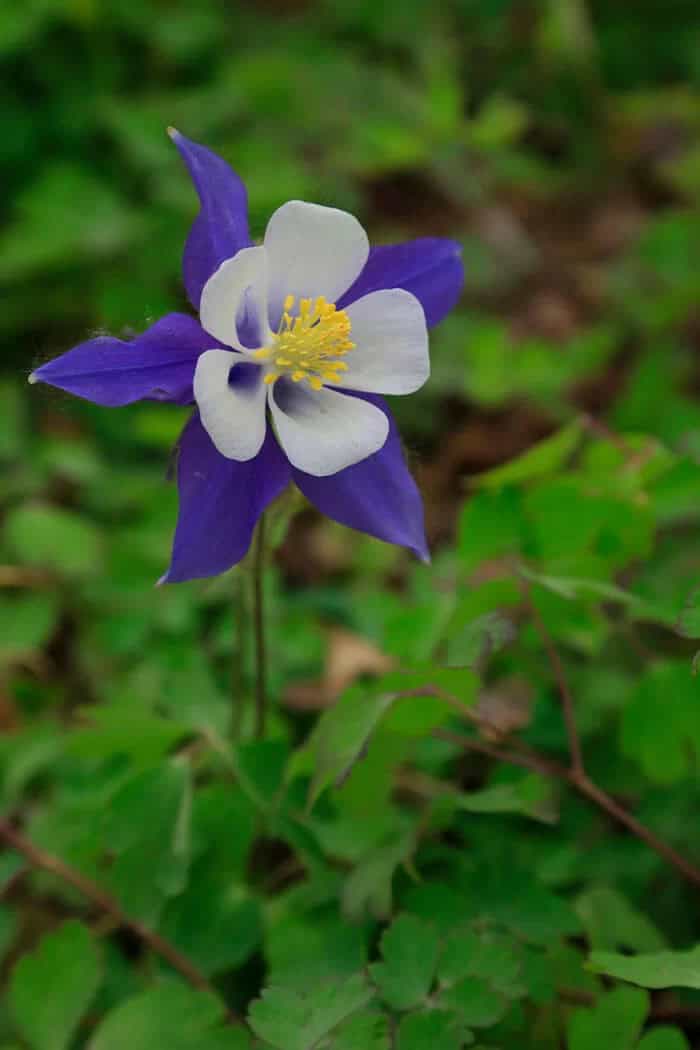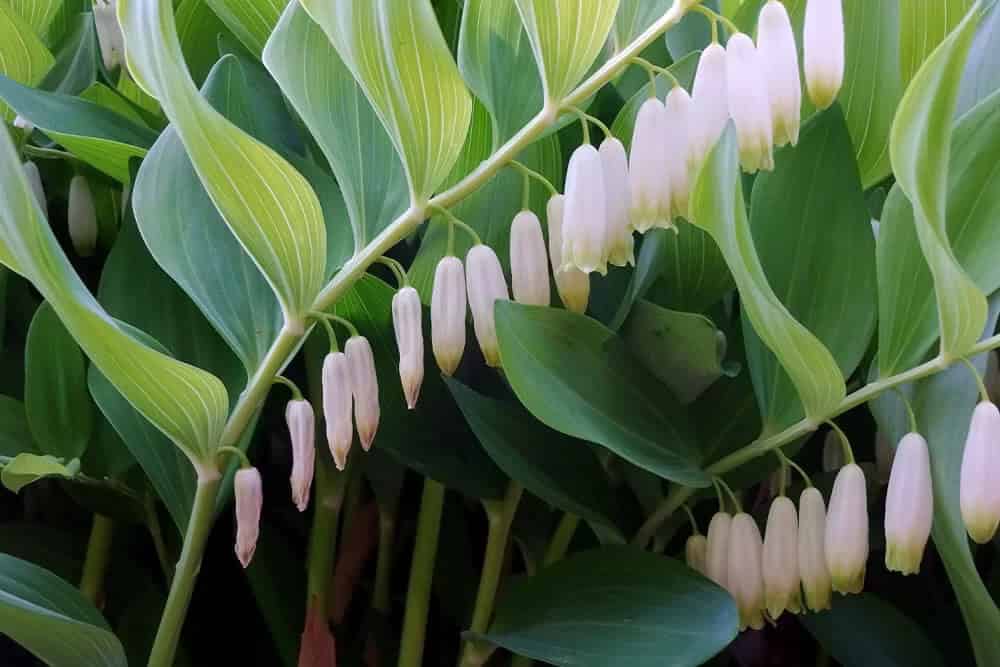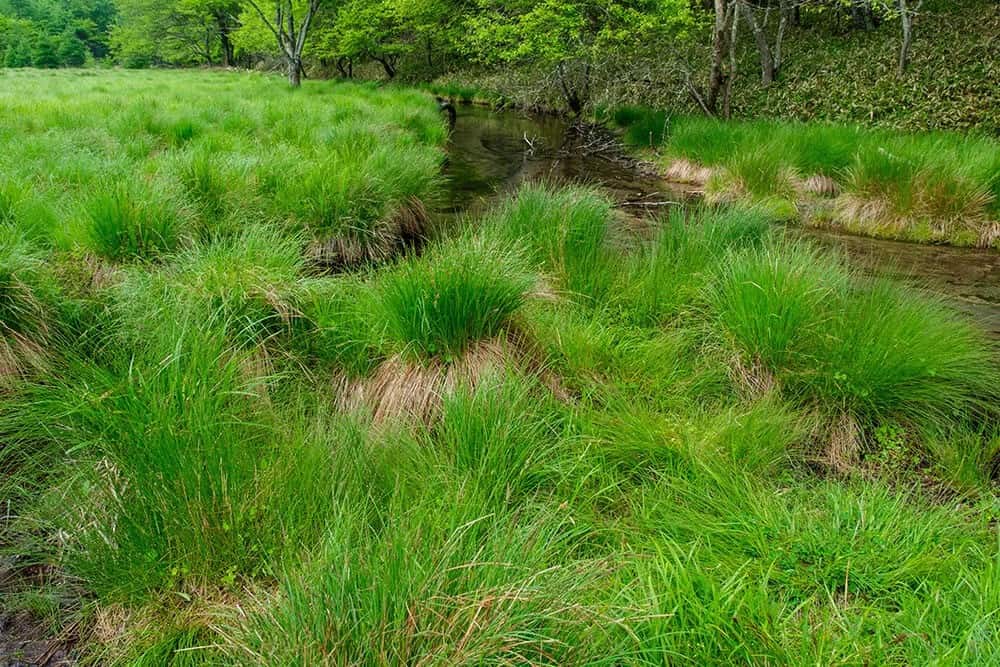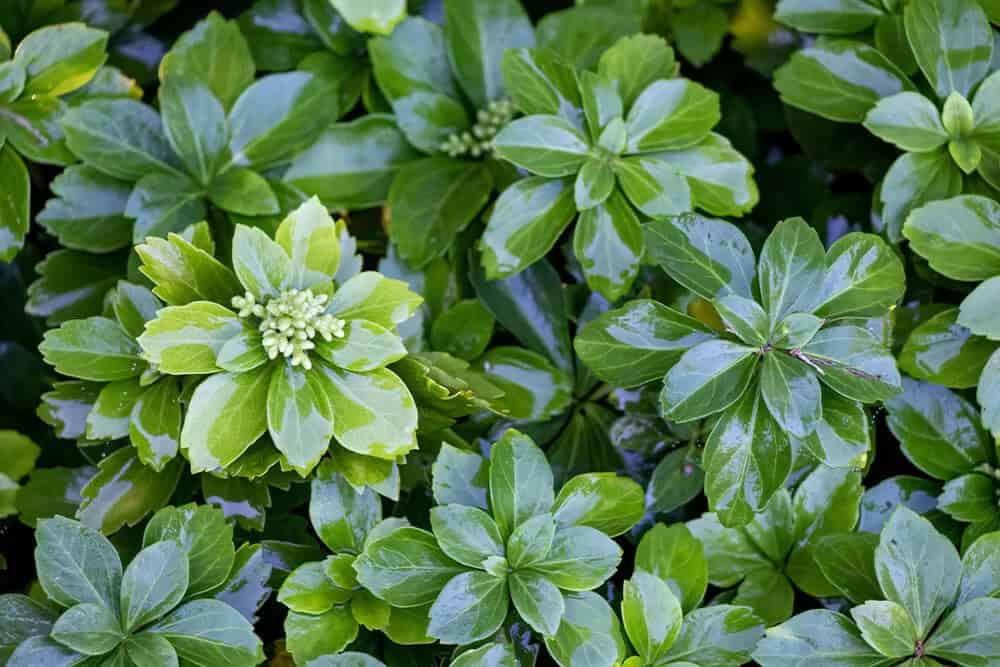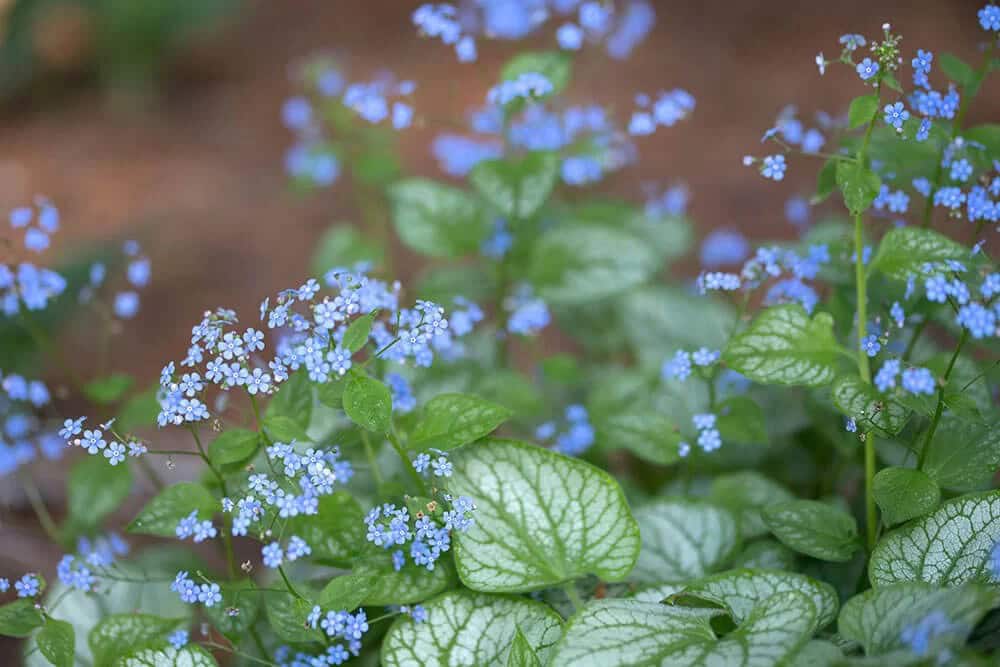As gardeners, we’ve all encountered the frustrating and challenging obstacle of dry shade – an environment that’s unforgiving for both plants and humans alike. The irony is that plants adapted to thrive in these conditions are relatively rare because they’re often mutually exclusive. Drought-resistant plants typically require full sun to develop deep roots or thickened leaves, while those that tolerate shade have increased photosynthesis, resulting in greater water loss.
While it’s true that plants adapted to dry soil and shade aren’t as widely discussed as their sun-loving counterparts, there are still plenty of species that excel in these conditions. Coral bells and cyclamen, for instance, have gained popularity due to their ease of growth and striking appearance. But what about the many other ornamental gems that can thrive in dry shade? Below, you’ll find 14 exceptional options that balance environmental hardiness with aesthetic appeal.
Before we dive into the list, let’s take a step back to understand why dry shade is such a challenge for ornamental plants. We’ll also touch on some tips for optimizing your garden’s dry shade areas. Even if you don’t fall head over heels in love with a single plant on this list (although it’s unlikely!), by the end of this article, you should have gained enough knowledge to choose your own plants with confidence.
Key Takeaways
Dry shade presents a unique challenge for plants, as their adaptations to one environment often make them less suitable for the other. For instance, many plants adjust to shade by developing larger leaves, which enhances photosynthesis but increases evaporation, requiring more water. This isn’t typically an issue in nature, where shady habitats are usually well-watered and dry areas are sunny.
However, there are exceptions, particularly in areas that support trees that don’t require a lot of water, leaving little surplus for herbaceous plants. Trees like pines and oaks have robust root systems that allow them to tap into available water, often starving smaller plants of this essential resource. Pines, for example, can outcompete herbaceous plants by extending their roots deeply, while oaks’ shallow roots may not support larger species.
The specific environmental conditions, including temperature, humidity, soil depth, shade intensity, and seasonal or continuous drought and canopy cover, influence how plants adapt to dry shade. Understanding these factors is crucial when selecting plants for your own dry shade environment. For instance, the soil around pines can be deep enough to support larger species, while oaks’ shallow roots may require raised beds or containers.
Additionally, the availability of supplemental irrigation significantly expands the options for plants in dry shade. When shopping for plants marketed as suitable for dry shade, be aware that they might still have high water requirements. Reading plant labels carefully and considering your specific environment will help you make informed decisions.
14 Ideal Garden Plants for Dry Shade
Epimedium, Barrenwort, Fairy Wings (Epimedium spp.)
While epimediums may not be as flashy as other ornamental plants, they’re undoubtedly one of the most reliable and adaptable options for dry shade. These hardy, evergreen perennials can thrive in conditions where many others would struggle or even perish. Their dense, heart-shaped foliage is an effective ground cover, and some species boast a striking reddish tint that adds visual interest to their sinuous curves. But what truly sets epimediums apart is their unique flowers.
They’re abundant, brightly colored, and possess an otherworldly appearance, with four inner petals nestled within four long, thin sepals that give the illusion of being ready to spring into action at a moment’s notice. In reality, however, these plants are not prone to flighty behavior; instead, they serve as the ultimate solution for dry shade woes. When it comes to selecting the perfect epimedium species or cultivar, there is considerable variability to consider.
European and Mediterranean plants tend to be hardier and more drought-resistant, while Asian varieties – such as E. grandifolium, the ancestor of many popular hybrids – are often showier. Yet, these plants are so resilient and visually appealing that most gardeners won’t have to choose between their needs.
Coral Bells (Heuchera spp.)
Coral bells are tantalizingly close to claiming their spot on this list solely due to the charm of their namesake flowers, which possess an endearing, delicate quality reminiscent of bleeding-hearts. However, it’s the foliage that often steals the show in most varieties – majestic, robust, and boasting a toothed texture available in a kaleidoscope of colors and hues, some of which are downright bewildering.
It’s astounding to think that these fantastical mounds of electric green leaves hail from North America (and specifically the arid Southwest), but make no mistake: coral bells possess an innate resilience. Once established, they require minimal upkeep, shrugging off drought, disease, and deer with equal aplomb, and with a hardiness spanning zones 3 to 9, it’s difficult to find a garden in the country where they won’t thrive.
Hostas (Hosta)
Hostas and coral bells are the ultimate gardening duo, bringing together big foliage and delicate flowers in a harmonious partnership. While coral bells steal the show with their vibrant colors, hostas bring their own unique charm with diverse patterns and shades of green. The smooth, cool lines of hostas provide a perfect contrast to the bold, extroverted nature of coral bells.
Many gardeners assume that hostas are thirsty plants, but in reality, they’re surprisingly drought-tolerant once established. In fact, they can thrive in dry shade with minimal maintenance in areas with cooler summers. However, it’s essential to keep in mind that hostas can attract pests like slugs and deer, so be prepared to take action to protect your plants.
Lady’s Mantle (Alchemilla mollis)
Lady’s mantle is a perennial with a rich history, as its archaic name suggests. In Europe, particularly in the British Isles, it’s an esteemed garden plant, prized for its delicate structure and effortless growth. The fine hairs on its leaves also create a mesmerizing effect when raindrops collect on them, making it a standout feature. This low-maintenance plant is adaptable to soil types as long as they’re not waterlogged.
While it doesn’t thrive in deep shade, it’s an excellent choice for dry, shady spots, especially in the southern regions of its hardiness range (zones 3 to 7). Lady’s mantle makes a superb underplanting or adds texture to mixed borders. However, it can be prone to self-seeding and should be planted thoughtfully to avoid overcrowding.
Oregon Grape (Berberis aquifolia)
Oregon grape may seem like an oxymoron, given its lack of connection to the fruit we typically associate with that name. In fact, it’s not even a vine, but rather a prickly, evergreen shrub with leaves resembling English holly in appearance. Its closest relative is actually epimedium, which hints at its affinity for dry shade environments.
The small, yellow flowers that bloom early in the season don’t resemble the unusual shapes of epimedium, but they harmonize perfectly with the coppery foliage, which seems to glow from within even in deep shade. Oregon grape is native to Douglas fir forests stretching from Alaska to California, and like many plants from this region, it has limited hardiness due to its reliance on the ocean’s moderating influence.
It thrives in zones 5-8, but in northern gardens, it will do best in a protected location, as it can be damaged by freezing winds. One peculiarity worth noting is that if you’re after ‘grapes’ from this plant, you’ll need to plant at least two or more.
Barren Strawberry (Waldsteinia ternata)
Cyclamen (Cyclamen)
Cyclamens may not dominate the landscape with their size or versatility, but they more than compensate with their quirky charm and adaptability. As drought-tolerant and shade-friendly plants, they’re well-suited to their specific niche, thriving in conditions that might prove challenging for others. Their slow growth rate belies a remarkable longevity, with some varieties capable of living up to 100 years or more.
This unique blend of traits makes them an excellent choice for dry shade ornamental arrangements.
One of the most fascinating aspects of cyclamens is their inverted life cycle. Unlike many plants that thrive during the warmer months and go dormant in winter, cyclamens are active during this time, producing small but striking flowers that bear a remarkable resemblance to the bees that pollinate them.
This nocturnal flowering habit comes at a cost, as these plants are sensitive to cold, dry winters. However, for the hardiest varieties, zones 5-9 provide a suitable environment for these unique plants to flourish and add a touch of elegance to winter gardens.
Columbine (Aquilegia spp.)
Columbines share an uncanny resemblance to cyclamens, not only in their physical appearance but also in their growing habits. Both species exhibit striking similarities – they’re early-blooming summer-dormant perennials with large, flat leaves and vibrant flowers suspended on delicate stems. While cyclamens are generally more restrictive in terms of climate, columbines are remarkably adaptable, thriving in a wide range of zones from 3 to 8, spanning a vast geography between Mexico and Canada.
With a rich history of cultivation on both sides of the Atlantic, columbines have earned a special place among garden enthusiasts, boasting a diverse array of native, exotic, and hybrid varieties that burst forth in a kaleidoscope of colors. One crucial aspect to keep in mind is that, like cyclamens, columbines typically enter a state of dormancy during the summer months.
As such, it’s advisable to pair them with later-flowering perennials, which emerge just as the columbines are winding down, ensuring a harmonious and engaging garden experience.
Hellebore, Lenten Rose (Helleborus orientalis)
Lenten rose’s peculiarities are what make it stand out. For one, it’s a precocious perennial, blooming remarkably early – often in late February, coinciding with its namesake holiday. Furthermore, its flowers boast an impressive longevity – not because they’re part of the reproductive process, but because the large, vibrant ‘petals’ that surround the actual bloom remain on the plant long after the flowers have dropped off.
The sepals’ remarkable persistence is a testament to their unique characteristics.
The foliage is equally intriguing, with leaves resembling palm fronds rather than traditional leaves. While some parts of the country enjoy evergreen foliage year-round, even in colder climates where it may die back slightly, the roots display impressive frost hardiness (zone 4). For an evergreen backdrop that will take center stage as the frost melts away, plant Lenten rose at the back of your perennial beds.
Solomon’s Seal (Polygonatum spp.)
Solomon’s seal exudes a quiet allure, its understated appearance inviting closer inspection. The plant’s distinctive chartreuse leaves, which zigzag up its arching stems without branching out, are complemented in spring by delicate off-white flowers that dangle from the stem’s underside like tiny ornaments. This subtle yet captivating display makes Solomon’s seal an ideal companion for other minimalist ornamentals, such as bleeding hearts, ferns, and lungworts.
When planted en masse, it slowly forms large, airy colonies reminiscent of autumn or ostrich fern, its delicate beauty unfolding over time. The most common ornamental species, P. biflorum, hails from eastern Asia, while the native P. pubescens, or hairy Solomon’s seal, is nearly identical save for its slightly shorter stature.
Western Sword Fern (Polystichum munitum)
While ferns often evoke images of lush, tropical environments, many species have adapted to thrive in dry conditions. In fact, an impressive array of ferns can be found in desert ecosystems! Among these drought-resistant plants are popular ornamental varieties like ostrich fern and Christmas fern. One standout is the Western sword fern, a close relative of the Christmas fern that’s native to the arid regions of the Western United States.
This hardy fern has evolved to flourish in dry pine forests and rocky slopes, making it an ideal choice for dry-shade plantings. What’s more, its evergreen fronds are a welcome sight between zones 5 and 9, providing year-round interest. As spring arrives, new fiddleheads unfurl, adding a playful touch as they bloom alongside other perennials.
Sedges (Carex spp.)
While sedges often get overlooked in shade gardens, especially in areas with scorching summers like the Deep South, they’re actually an underrated gem. Despite not being directly related to grasses, they share similar characteristics and ecological roles, making them a valuable addition to forested ecosystems. The sheer diversity of sedges is astounding – over 2,000 species can be found worldwide, ranging from compact clumps to majestic stands reaching heights of over a foot.
This array of options means there’s something for every gardener, but it also makes it challenging to pinpoint specific characteristics. Fortunately, most garden stores carry a variety of sedges, although they may not always be precisely identified. For dry shade conditions, it’s best to opt for native species. Pennsylvania sedge (C. pensylvanica) stands out as one of the most drought-tolerant and frost-hardy options, boasting impressive hardiness ratings from 3 to 8.
Its spreading growth habit also makes it a feasible lawn substitute.
Japanese Pachysandra (Pachysandra terminalis)
Japanese pachysandra is an exceptionally hardy, evergreen ground cover that can thrive in environments where most other plants would struggle to survive. Its growth pattern is characterized by a sprawling habit, with multiple plants capable of covering large areas without growing taller than knee-high. This tough-as-nails perennial also boasts natural pest resistance due to the toxic compounds present in its leaves, making it an ideal choice for those seeking low-maintenance landscaping.
However, like many plants that seem too good to be true, Japanese pachysandra does have some limitations. It is susceptible to certain fungal pathogens, such as downy mildew, and may require thinning to promote healthy air circulation. Furthermore, in ideal growing conditions it can become invasive, prompting the need for close monitoring to prevent unwanted spread.
Before planting this perennial, it’s essential to verify its invasive status in your area and be prepared to take measures to maintain its growth within acceptable boundaries.
Siberian Bugloss (Brunnera macrophylla)
14 Wonderful Drought-Tolerant Plants That Also Love Shade
While dry shade may seem like a challenge, the truth is that many plant species are incredibly resilient and thrive in these conditions. In fact, there are numerous species that excel in dry shade environments, each with its unique characteristics. However, it’s essential to recognize that the specific plants that flourish in your dry shade garden may differ from those that do well elsewhere.
Don’t be discouraged if a particular plant doesn’t perform as expected – instead, use it as an opportunity to learn and adapt. Experimentation is key, and finding the right plants for your environment can take time. But the payoff is worth it: with the right plants, you’ll have a garden that’s not only beautiful but also remarkably low-maintenance.
Ultimately, the secret to growing a stunning garden isn’t about using the latest gadgets or products – it’s about understanding the unique needs of your plants and giving them the environment they need to thrive.
Frequently Asked Questions About Plants for Dry Shade
What plants grow best in dry conditions?
While it’s challenging to pinpoint the most efficient plant in terms of water usage, cacti are often considered a prime example. Their unique features, such as succulent stems and protective spines that serve as modified leaves, are specifically designed for conserving water. However, this remarkable adaptability comes with its own set of limitations.
For instance, while cacti thrive in hot desert environments, their succulent stems can be damaged by freezing temperatures, and they tend to be relatively scarce in cold deserts like those found in Central Asia or Patagonia. This highlights the importance of considering context when evaluating plant adaptations – a strategy that involves trade-offs between different environmental conditions.
What does dry shade mean?
In various regions, dry shade has distinct meanings and implications. The underlying cause of dry shade can significantly influence how plants adapt to these conditions. Often, it’s a result of unequal competition between trees and herbaceous plants. Trees, with their extensive root systems, have an advantage in water harvesting over smaller plants with shallower roots. This competition is particularly intense when the shade trees themselves have shallowly-branching roots, such as oaks.
Their roots directly compete with smaller plants growing beneath them, and due to their size, they typically prevail. In addition, dry shade can occur in ecosystems experiencing intense seasonal water limitation. The pine forests along the Mediterranean, for instance, are moist enough to support understory vegetation during winter, but not during summer.
Plants in this region have evolved creative strategies to capitalize on this seasonality: cyclamens, for example, enter a state of dormancy during the summer to avoid competing for water, and grow and bloom during the fall and winter instead.
What is the best Polystichum for dry shade?
Native to North America’s western regions, the holly fern or sword fern (Polystichum munitum) thrives in arid forests across the United States. This remarkable plant boasts exceptional hardiness and drought-resistance, making it an ideal choice for ornamental purposes. Its unique adaptability has led to its widespread cultivation in dry shaded areas.
What is the most drought-tolerant Epimedium?
Garden epimediums, primarily from Europe and Japan, are the foundation of this group. However, in recent years, Chinese species have gained popularity. While European epimediums are generally regarded as more drought-resistant, hybrids between Asian and European species also exhibit impressive tolerance to dry conditions.
In contrast, newer Chinese epimediums, although not necessarily less capable of withstanding drought, remain somewhat untested due to a lack of extensive study on these varieties compared to their older European and Japanese counterparts.
What is the most drought-tolerant plant in the world?
While many might assume that a species capable of thriving in arid environments would boast specialized adaptations for preserving moisture, the Selaginella lepidophylla, a type of moss, defies convention. This extraordinary plant doesn’t possess any unique features to prevent water loss, yet it can survive for extended periods in a dormant state, withering away into almost complete desiccation, only to spring back to life and resume growth when the next rainfall arrives.
Interestingly, many of the world’s most resilient plants are actually simple organisms like mosses and ferns, which are inherently less susceptible to water loss due to their lack of vascular tissue.

